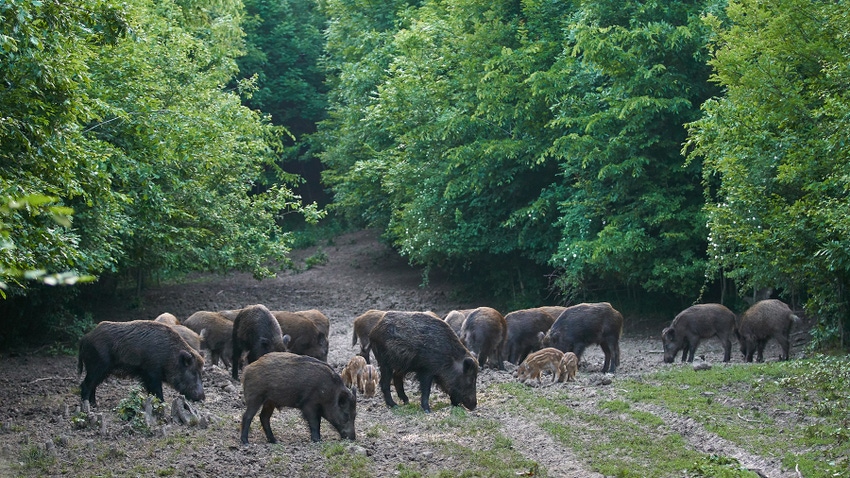
Often, we think of crop loss being caused by weather, such as drought or excess moisture. However, a lesser quantified, but growing, cause of loss for crops in the southeast United States is wildlife damage.
The most common causes of wildlife damage in soybeans are deer and hogs. Wildlife damage can be quantified when crop yield is damaged to a level that triggers an indemnity payment.
Using the USDA RMA cause of loss data, Figure 1 shows the county map of soybean indemnity payments due to wildlife damage from 2011 to 2022; Figure 2 shows the percent of total soybean wildlife indemnities as a percent of total insured liability for soybeans by county.
Payment distribution
Mississippi received the most payments totaling $6.54 million, and Arkansas received the least number of payments, totaling $1.1 million. Tennessee was second with $5.65 million and Kentucky was third with $5.5 million. Missouri received $4.3 million, and Alabama received $2.4 million.
We also show the annual losses to wildlife damage for soybeans in the seven states combined (Missouri, Kentucky, Arkansas, Tennessee, Mississippi, Alabama, and Georgia) from 2011 to 2022 (Figure 3).
Indemnity payments due to wildlife damage to soybeans in 2022 were approximately $4.8 million, which is a 487% increase from 2011. Between 2011 and 2022, in these seven southeastern states, a total of 250,818 soybean acres received an indemnity payment due to wildlife damage.
Percentage of payments
Figure 3 also shows the percentage of total soybean indemnity payments caused by wildlife damage (orange line). These indemnities due to wildlife losses are a small percentage of the total soybean crop insurance losses but have increased since 2011.
It should be noted that the total indemnity payments received do not capture the total loss of wildlife damage in soybean fields.
Before an indemnity payment is made, the actual revenue or yield must be below the crop insurance yield or revenue guarantee for the insured unit. Also, damage to uninsured acres would not be accounted for in the data.
Further, some losses due to wildlife may be being attributed to another cause that also impacted the farm (e.g. drought or excess moisture). As such, indemnities paid due to wildlife losses in soybeans represent only a portion of actual producer losses.
In the seven-state region, state average soybean crop insurance coverage levels for 2022 (2011-2022 average) were: Alabama 72.1% (71.6%), Arkansas 63% (62.2%), Georgia 67.6% (66.8%), Kentucky 76.1% (76.2%), Missouri 73.2% (73.0%), Mississippi 69% (69.2%), and Tennessee 72% (72.2%).
We note that some states and counties allow for nuisance hunting permits out of season to control deer and hog damage to crops. It might be of interest to check with your local game warden to determine if this is an option for your farm.

Figure 1. Soybean Indemnity Payment Map for Wildlife Damage Cause of Loss for Missouri, Kentucky, Arkansas, Tennessee, Mississippi, Alabama, and Georgia from 2011 to 2022

Figure 2. Percent of Wildlife Damage Cause of Loss as a Percent of Total Insured Liability for Missouri, Kentucky, Arkansas, Tennessee, Mississippi, Alabama, and Georgia from 2011 to 2022

Figure 3. Soybean Wildlife Indemnity Payments for Missouri, Kentucky, Arkansas, Tennessee, Mississippi, Alabama, and Georgia and Percent of Total Soybean Indemnity Payments Caused by Wildlife Damage by Year from 2011 to 2022
About the Author(s)
You May Also Like







